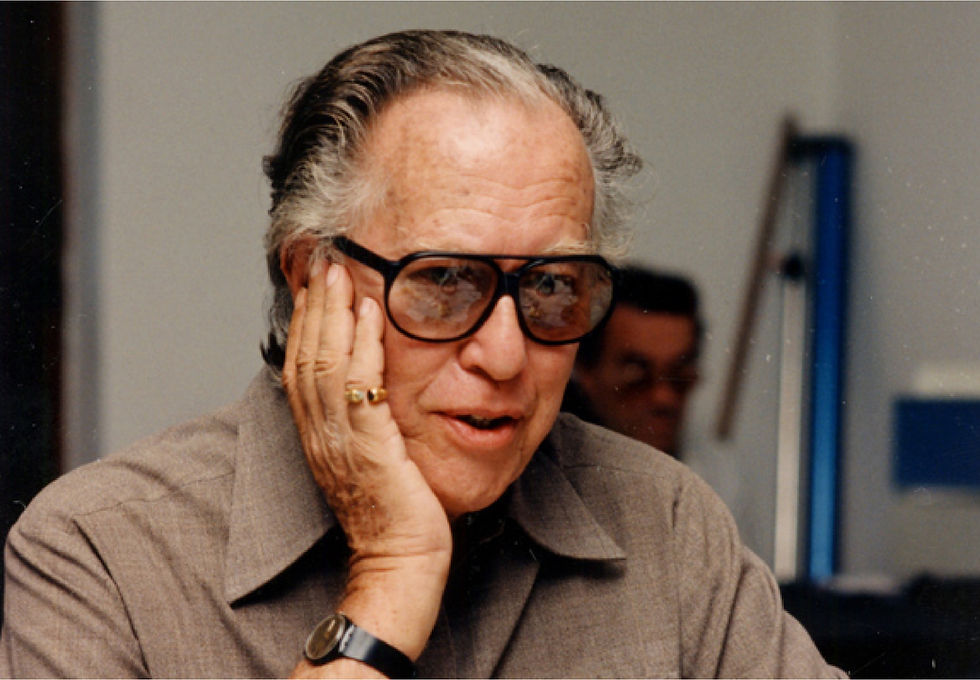E.1027 Modern Masterpiece
- tipsy modernist
- Apr 7, 2020
- 3 min read
Updated: Apr 14, 2021
This modernist villa clinging to the side of a cliff overlooking the Mediterranean is considered an architectural masterpiece. Although not nearly as well known as her furniture, E.1027 is perhaps Eileen Gray's greatest work and yet for most of her life it was attributed to her male peers.

EG designed the villa for Jean Badovicci,(her friend with benefits) and herself, and the building is very much a reflection of her design philosophy. The esoteric name is code for their combined initials. A perfect Gezamtkunstwerk (or total work of perfect art) everything from the architecture and furniture to the landscape was all designed by Eileen Gray to create the perfect part pad for herself and her boyf. Like all of her work it is compact and highly flexible. The many sliding doors, folding tables and hidden compartments allow the user to customize the space according to their needs. Although designed for entertaining, it’s also full of terraces and alcoves where one can find private space.This highly choreographed experience continues into the landscape where outdoor spaces were designed as extensions of the interiors. Using plantings instead of walls to create outdoor rooms, and frame views may sound commonplace today but it was unheard of at the time.

Many of EG's most famous pieces of furniture were designed for E.1027. The Bibendum chair, named after the Michelin tire character, resembled the character not only because of its shape but also it was originally designed to be covered in rubber. Now produced in leather and chrome-by Aram this lustworthy chair is a modernist design classic.

Le Corbusier was a frequent visitor. He was especially intrigued by the landscape design and the way it complimented the architecture. He even studied the plantings with fellow architect Arno Goldfinger and was possibly inspired to make changes to a villa he had designed for his parents. Actually calling Corbusier a frequent visitor is an understatement- he was obsessed with the villa. Talk about making yourself at home-topless, in pajama pants and smoking a pipe. One might think the photo below shows Corbusier at home here but no this was taken at E.1027. This picture certainly demonstrates his sense of ownership and some might say entitlement.

By 1932 Eileen Gray had downgraded her relationship with Jean Badovicci and moved out from E-1027. But the two remained good friends such that EG gifted the villa to him. (bad move) In 1939 Badovicci allowed his new best friend/stalker, Le Corbusier to paint multiple murals throughout the villa without consulting Gray. (of course) The mural behind Le Corbuiser in this image is one of the murals . Needless to say Eileen Gray was furious about the murals, although technically she no longer had ownership of the hosue.Corbusier, Badovicci, and Gray had a falling out over it and their friendships never recovered. (More on this in a later post- entitled The Feud.) Eileen Gray’s reputation and contributions became forgotten over the years such that when Badovicci died in 1956 the building was attributed to him. (insert scream here) Badovicci left the building to his sister, a Romanian nun who was unable to accept it. The building changed hands many times over the years and eventually fell into disrepair and became a place for squatters and illegal activities.

Because Le Corbusier had built near-by and painted murals on its' walls, E.1027, was attributed to him for many years. By the early 1970’s Eileen Gray’s niece Prunella Clough and others worked hard to purchase the villa. Ironically the French government became involved in trying to save it, believing it was designed by Le Corbusier. A non-profit group The Friends of E-1027 now owns the property and is working to restore it.
Sources:
Eileen Gray, Designer and Architect. Phillipe Garner
Eileen Gray, Her Work and Her World. Jennifer Goff
Staying In, Eileen Gray and the Design of Sapphic Modernity. Jasmine Rault




Comments